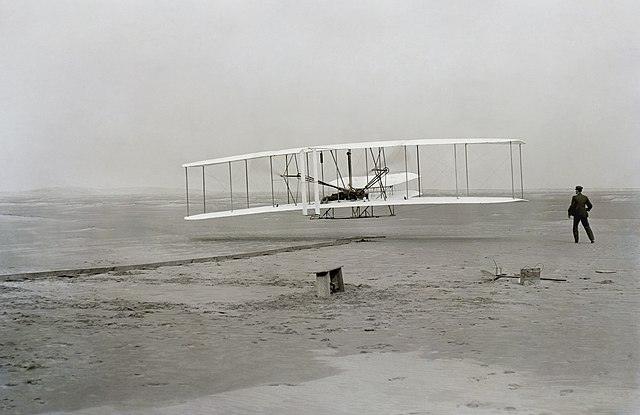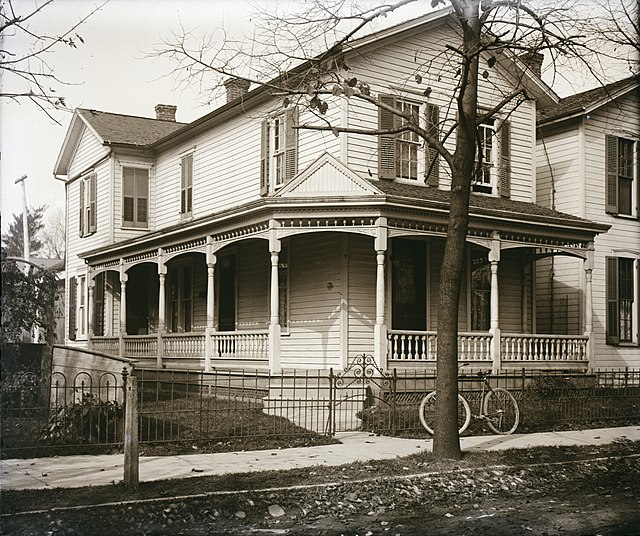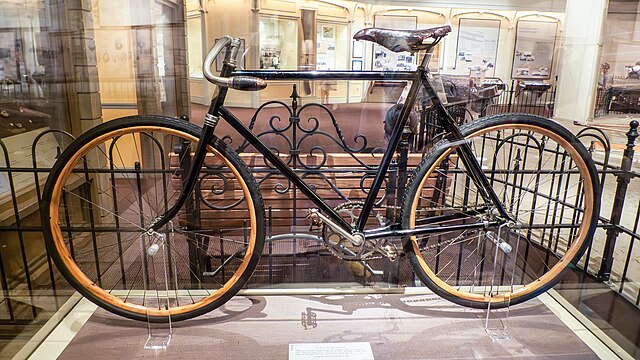Wing warping was an early system for lateral (roll) control of a fixed-wing aircraft. The technique, used and patented by the Wright brothers, consisted of a system of pulleys and cables to twist the trailing edges of the wings in opposite directions. In many respects, this approach is similar to that used to trim the performance of a paper airplane by curling the paper at the back of its wings.
Diagram of the Wright brothers' 1899 kite, showing wing bracing and strings attached to hand-held sticks used for warping the wing while in flight.
The Wright brothers' first powered aircraft, which utilized warping wings.
The Wright brothers, Orville Wright and Wilbur Wright, were American aviation pioneers generally credited with inventing, building, and flying the world's first successful airplane. They made the first controlled, sustained flight of an engine-powered, heavier-than-air aircraft with the Wright Flyer on December 17, 1903, four miles (6 km) south of Kitty Hawk, North Carolina, at what is now known as Kill Devil Hills. In 1904 the Wright brothers developed the Wright Flyer II, which made longer-duration flights including the first circle, followed in 1905 by the first truly practical fixed-wing aircraft, the Wright Flyer III.
Image: Orville Wright 1905 crop
Image: Wilbur Wright crop
Wright brothers' home at 7 Hawthorn Street, Dayton about 1900. Wilbur and Orville built the covered wrap-around porch in the 1890s.
The Wright brothers' bicycle at the National Air and Space Museum






